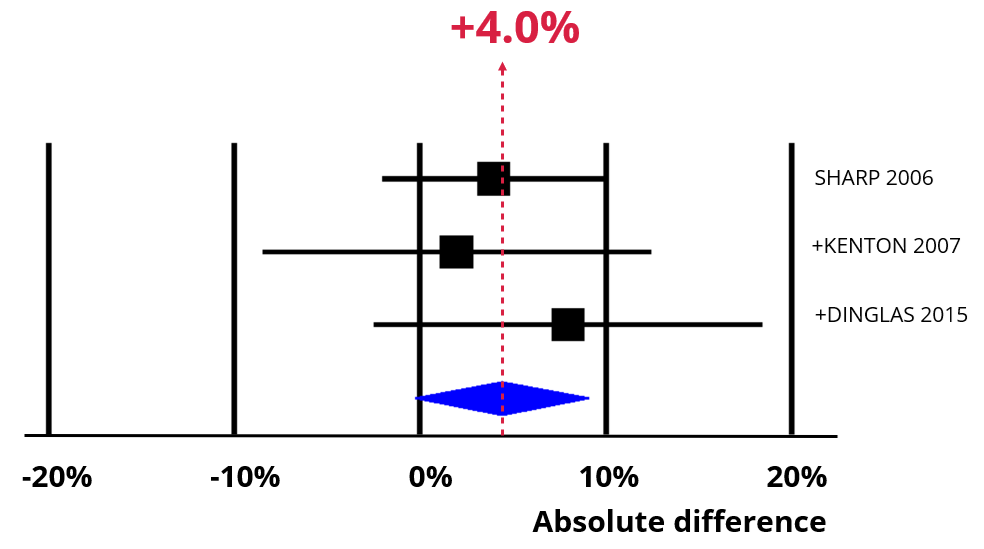Various strategies compared to usual practice for return postage, such as free post versus second class stamp; high priority mail stamp versus usual postage; and personal form.
Various return postage strategies may increase retention slightly.
An increase of 4% (95% confidence interval = 0% to 9%).
GRADE Low certainty.
We recommend that trialists consider using strategies such as free post, high priority mail among others for return postage.
See Resource bundle below for details on various return postage strategies.
Imagine initial retention is 65% of those approached. You have a trial with 100 participants that needs responses from 80 to meet its statistical power calculations. Retention of 65% means that you will be 15 responses short (see chart below).

Now imagine using different strategy for return postage. The chart below shows the impact of an absolute increase of 4% (95% CI = 0% to 9%). Retention is now 69%, which means our best estimate is that you would now be only 11 responses short.


